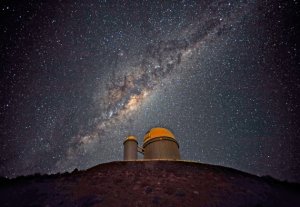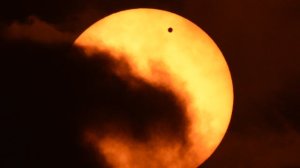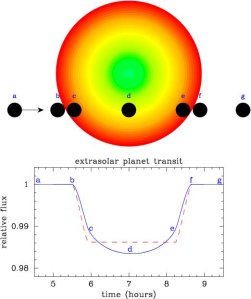
The Troubled Past:

It was once punishable by death to propose and support the idea that the Earth was not the center of the universe. Our once geocentric view has undergone a major shift since earlier times (thankfully). We now know that our planet Earth has a whole platoon of planetary brethren. And of course, these planets are not limited to our own solar system. Many other worlds have been discovered through advances in science and technology that have opened up whole new areas of planetary research. It was until only recently that suggesting worlds around other stars was taboo, but luckily, today this is not the case. The field of exoplanetary research is abuzz with new discoveries and advancements..
Looking for other planets around stars (exoplanets) is by no means easy. People often think we can just aim a telescope at any random star and look for them; however, observing exoplanets visually is currently damn near impossible and has only been achieved on a few occasions. So astronomers have used their ingenuity to devise several methods to detect exoplanets. These methods all have their own strengths and weaknesses but they have all contributed greatly to the search for other planets outside our own solar system.
Transiting Method

The transit method was popularized by NASA’s Kepler Space telescope and is possibly the greatest contributor in the discoveries of exoplanets. Many of you may have actually witnessed a planetary transit earlier this year with Venus passing in front of the Sun. For those of you who did, you will know that it was truly a sight to behold! The transit method works by observing a preselected study of stars for any periodical reduction in observed brightness. If this reduction is observed in any of the selected stars it is possible that the star’s observable brightness is being reduced by a planet passing in front of it. As you may have already guessed, that passing is what astronomers call a transit, and is the key to this methods success. How astronomers use a reduction in a stars brightness to determine if a planet is orbiting is where the magic happens. If a dimming is observed, astronomers look for key indicators to confirm the likelihood that this has been caused by an orbiting planetary body. Firstly is the dimming periodical? (Does it repeat after the same amount of time?). And secondly, is the reduction consistent? Is the stars brightness always reduced by the same amount each period? If these indicators are present it is usually a good sign that a planet may have been observed.
Astronomers can glean some very important information about planets detected using this method. As the planetary transit is periodical in nature astronomers can determine the planets orbital period. The planets radius can also be derived by observing the reduction in the stars observable brightness and using this information, they can determine how much light the orbiting planet blocks out, giving the planet’s radius. An additional bonus of the transit method is that it can hint at the planets atmospheric make up, if it has one. As the planet passes through the star’s light, this light also passes through the planet’s atmosphere, this light then heads towards Earth and is captured in our telescopes. The light can then be studied using spectroscopy to provided astronomers with some clues as to the atmospheric make up of these alien worlds.

The transit method is very successful, however, it is not without its flaws. The very nature of a planetary transit is what hinders this method the most. For astronomers to observe a planetary transit around another star it needs to be face on towards Earth. What this means is that the star’s orbiting planet must have an orbital alignment which causes it to pass in front of the star as observed here on Earth, this occurrence is somewhat rare. Due to this detecting exoplanets using this method is difficult however this is countered by observing a large selection of stars at one time using a wide field of view. Another flaw of the transit method is its detection bias. Transits are only detected if they are periodical and for astronomers to be sure they must observe at least three transiting periods. For this to occur the planets orbit must be fairly short as observing the same star for years is very costly, this is why many planets detected by this method have a much shorter orbital period than that of Earth, many have orbital periods of less than a few days, some even hours. The transit method relies heavily on its ability to detect a minute dimming in the stars observable brightness. This is obviously restricted by the amount in which the planet dims its host star. This means the larger the planet the greater the reduction and the easier it is for astronomers to detect, however this also reduces the number of planets detected by this method as smaller planets dim their host star by a much smaller degree which makes it much harder to observe.
These flaws hinder the success rate of this detection method. However as our technology advances and instruments become more sensitive, some of these limitations can be overcome. I hope you have enjoyed this article and as always keep looking up at the grand cosmic theatre and be inspired.